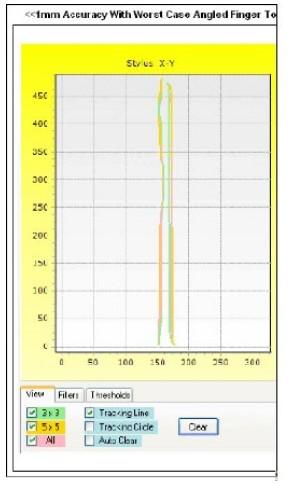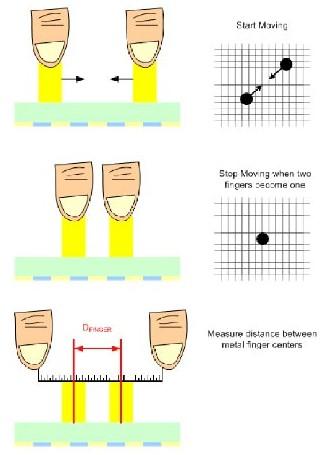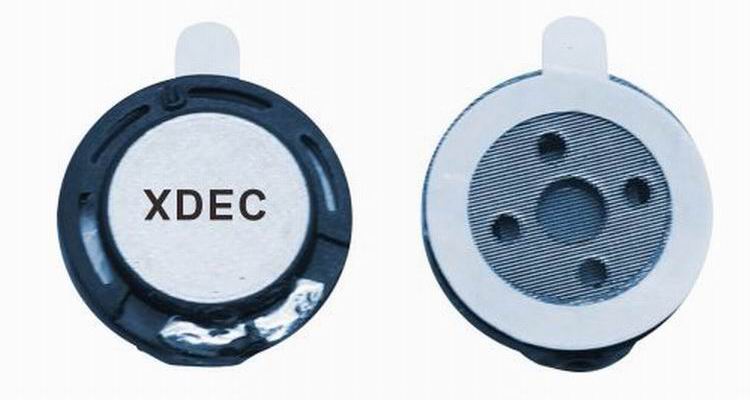The most far-reaching technological change to the performance of touch screens is the shift from resistive to capacitive touch screen technology. According to the market research agency iSuppli predicts that by 2011, nearly 25% of touch screen mobile phones will be transferred from resistive to capacitive touch screens. The various benefits brought by capacitive touch screen technology will promote the rapid growth of the market. When a traditional resistive touch panel senses a finger or a stylus, the top layer of flexible transparent material is pressed down to contact the conductive material layer below; and the projected capacitive screen has no movable parts. In fact, the projected capacitive sensing hardware consists of a top layer of glass material, followed by X and Y axis components, and an indium tin oxide (ITO) insulating layer covering the glass substrate. Some sensor suppliers will make a single layer sensor, embedding X and Y axis sensors and small bridge components in a single layer of ITO. When a finger or other conductive object is close to the screen, it will be generated between the sensor and the finger A capacitor. Compared with the system, this capacitance is quite small, but it can be measured by various techniques. One of these technologies is the use of TrueTouch components, including rapid change of capacitance, and the use of a bleeder resistor to measure the discharge time. This all-glass touch surface gives users a smooth and smooth touch. End product manufacturers also prefer glass screens, because the glass material will give the end product a beautiful industrial design and provide high-quality capacitive signals for touch measurement. Finally, it is important not only to consider the appearance of the touch panel, but to understand its operation mode. In order to design a touch screen product with excellent performance, the following parameters must be noted. Accuracy : Accuracy can be defined as the maximum positioning error in a pre-defined touch screen area, taking the straight line distance between the actual position of the finger and the measurement position as a unit. When measuring accuracy, an analog or mechanical finger is used. Put your finger at an accurate position on the panel, and then compare the actual position of the finger with the measured position. Accuracy is very important. The user hopes that the system can accurately locate the finger position. One of the most criticized shortcomings of resistive touch screens is the low accuracy, and the accuracy will gradually weaken over time. The accuracy of capacitive touch screens has created many new applications, such as virtual keyboards and handwriting recognition without stylus. Figure 1 shows the data of a touch panel with an incomplete structure. It shows that there is a wandering phenomenon in the position of the finger. In fact, the simulated finger moves in a straight line. Figure 1 Example showing inaccuracies or errors in touch panel tracking Finger spacing : Finger spacing is defined as the shortest distance between the center points of two fingers on the screen when the touch screen controller measures the position of two fingers. The finger spacing measurement method (Figure 2) is to place two simulated or mechanical fingers on the panel, and then gradually close the distance between the two fingers until the system detects that the two fingers are one finger. Some touch screen suppliers' finger spacing refers to the edge-to-edge distance, and some refers to the distance between the center points. The 10 mm finger spacing of a 10 mm mechanical finger indicates how many fingers touch the screen, or the distance between the fingers is 10 mm. The actual condition depends on the specifications of the touch controller. Without good finger spacing, a multi-touch solution cannot be designed. For the emulated keyboard, the finger spacing is particularly important, because when using the emulated keyboard, the finger spacing on the screen is usually very short. Figure 2 Measuring finger spacing
Recorder speaker is a kind of micro speaker unit which uses a diaphragm made of Mylar material. Mylar speakers are of ultrathin design and lightweight and clear voice. It is widely used in education industry (storyteller, voice E-book, repeater, reading pen-).
There are two types of Mylar speakers from the shapes:
1) Round shapes, we have products from 10mm to 57mm in diameter.
2) Oblong shape, we have products in sizes of 1510/1712/1813-..
FAQ
Q1. What is the MOQ? Recorder Speaker Recorder Speaker,Car Recorder Speaker,Recording Pen Speaker,Dvr Speaker Shenzhen Xuanda Electronics Co., Ltd. , https://www.xdecspeaker.com



XDEC: 2000pcs for one model.
Q2. What is the delivery lead time?
XDEC: 15 days for normal orders, 10 days for urgent orders.
Q3. What are the payment methods?
XDEC: T/T, PayPal, Western Union, Money Gram.
Q4. Can you offer samples for testing?
XDEC: Yes, we offer free samples.
Q5. How soon can you send samples?
XDEC: We can send samples in 3-5 days.